
Calico is a heavy plain-woven textile made from unbleached, and often not fully processed, cotton. It may also contain unseparated husk parts. The fabric is far coarser than muslin, but less coarse and thick than canvas or denim. However, it is still very cheap owing to its unfinished and undyed appearance.

The spinning jenny is a multi-spindle spinning frame, and was one of the key developments in the industrialisation of textile manufacturing during the early Industrial Revolution. It was invented in 1764–1765 by James Hargreaves in Stan hill, Oswaldtwistle, Lancashire in England.

Textile printing is the process of applying color to fabric in definite patterns or designs. In properly printed fabrics the colour is bonded with the fibre, so as to resist washing and friction. Textile printing is related to dyeing but in dyeing properly the whole fabric is uniformly covered with one colour, whereas in printing one or more colours are applied to it in certain parts only, and in sharply defined patterns.
The textile industry of the city of Ahmedabad in the state of Gujarat in India dates back to the 19th century, when the industry was established under the British raj. Textile mills employed thousands of people from across the state, and the cotton garments manufactured were exported around the world. The prosperity of the industry was the mainstay of the city's economy. It is called the "Manchester of India". Thus, the Ahmedabad is officially famous for cotton textile works.

Pocasset Manufacturing Company was a cotton textile mill located in Fall River, Massachusetts. It was located just west of Main Street across the second falls of the Quequechan River. It was organized on August 15, 1821, with $100,000 in capital. The mill began operation in 1822, with Samuel Rodman of New Bedford as the principal owner. Oliver Chace, served as the mill's agent until 1837. Nathaniel Briggs Borden was named clerk and treasurer.

William Kilburn (1745–1818) was an illustrator for William Curtis' Flora Londinensis, as well as a leading designer and printer of calico. A few hundred originals of his water colour designs make up the Kilburn Album, housed at the Victoria and Albert Museum in London.
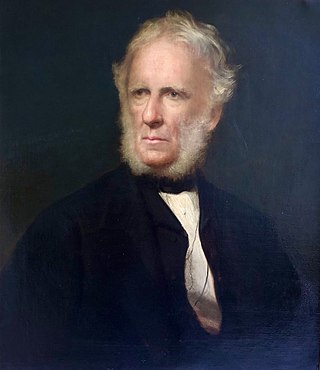
Edmund Potter (1802–1883) was a Manchester industrialist and MP and grandfather to Beatrix Potter.
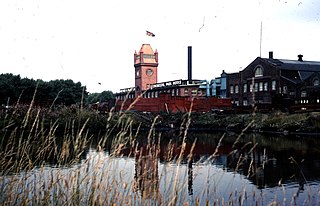
Mather & Platt is the name of several large engineering firms in Europe, South Africa and Asia that are subsidiaries of Wilo SE, Germany or were founded by former employees. The original company was founded in the Newton Heath area of Manchester, England, where it was a major employer. That firm continues as a food processing and packaging business, trading as M & P Engineering in Trafford Park, Manchester.
Turkey red is a dyeing method that was widely used to give cotton a distinctive bright red colour in the 18th and 19th centuries. It was made using the root of the rubia (madder) plant, through a long and laborious process which originated in the historical Levant region, namely being developed in India and China. Turkey red was brought to Europe in the 1740s and in France was known as rouge d'Andrinople.
The Sykes Bleaching Company was a cotton bleaching business established in Edgeley, near Stockport in 1792 which grew to become one of the largest bleaching enterprises in the United Kingdom.

Taylor, Lang & Co. was a textile machinery manufacturer based in Stalybridge, Greater Manchester, England.

Arkwright Mill, Rochdale is a cotton spinning mill in Rochdale, Greater Manchester. It was built in 1885 by the Arkwright Cotton Spinning Co. It was taken over by the Lancashire Cotton Corporation in the 1930s and passed to Courtaulds in 1964. It was located next to Dale Mill on Roch Street. The ring and doubling frames were made by Howard & Bullough, Accrington. The mill closed in 1980, was demolished in 2007 and the land redeveloped for housing.
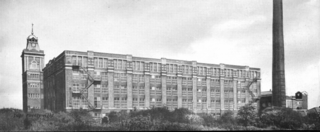
Pilot Mill, Bury is a four-storey cotton spinning mill in Bury, Greater Manchester, England. It was built in 1905 for the Pilot Spinning Co. It was taken over by the Lancashire Cotton Corporation in 1939. The mill closed in 1962 and was later sold to Antler Luggage. The Mill is currently occupied by Baum Trading Ltd and Metzuyan Ltd they have opened a retail outlet with an on site cafe.
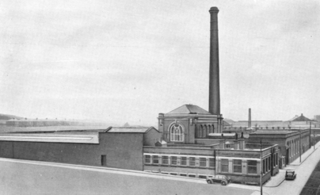
Harp Mill was a former cotton spinning mill in the Castleton, Rochdale, Greater Manchester, England. Queensway, Castleton was a hub of cotton mills including the three 't', Th'Arrow, Th'Harp, and Th'Ensor. The 1908 Castleton map includes: Marland Cotton Mill, Castleton Cotton Mill, Globe Works, Arrow Cotton Mill, Harp Cotton Mill, Globe Leather Works, Castleton Size Works and Castleton Iron Works. Th'Harp was built in 1908 for the Harp Doubling Company and was taken over by the Lancashire Cotton Corporation in 1938. The mill closed in 1958, and was sold to the hosiery manufacturer N. Corah Ltd.

St James Buildings is a high-rise, Grade II listed building on Oxford Street, Manchester, England, completed in 1912. The building was constructed in the Edwardian Baroque style and has a Portland stone exterior reaching a maximum height of 60m.
James Thomson was an English industrial chemist who made a career and large reputation in calico printing. He became a Fellow of the Royal Society in 1821.
Livesey, Hargreaves and Company was an English business involved in the textile industry during the late 18th century.
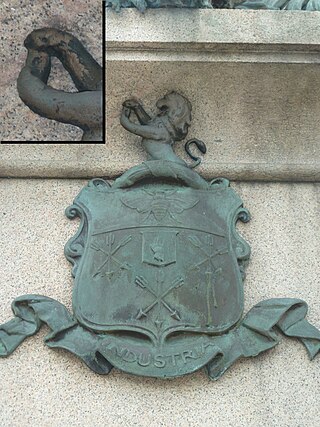
Robert "Parsley" Peel was a British cotton mill owner and grandfather to Sir Robert Peel, 2nd Baronet, future prime minister of the United Kingdom. Peel started life as a yeoman farmer but experimented with calico printing, eventually creating a parsley leaf pattern which would become his trademark. Despite losing a number of machines during riots, Peel's company became the largest in the textile sector by the time of his death, with 23 factories.
Ormrod and Hardcastle spinning and manufacturing firm began in 1788, with the partnership of James Ormrod and Thomas Hardcastle, and the purchase of the Flash Street mills in Bolton, Greater Manchester. These two men have been identified amongst the fathers of the early cotton trade in North West England. Others named are Carlisles, Gray, Knowles, Bulling, Crook and Culling. These names often figured prominently in the political, judicial and economic life of Bolton during its great period of growth, but sadly these names have been largely forgotten in the history of the cotton trade. By the time of their closure, in 1960, Ormrod and Hardcastle owned six large successful cotton mills in Bolton.
Tootal is a brand name for a range of British ties, scarves and other garments. The brand is now owned by Coats Viyella. It originates from a textile spinning and manufacturing company established in Manchester in 1799, which later became Tootal Broadhurst Lee, and subsequently Tootal Ltd. The company held patents in crease-resistant fabric.













